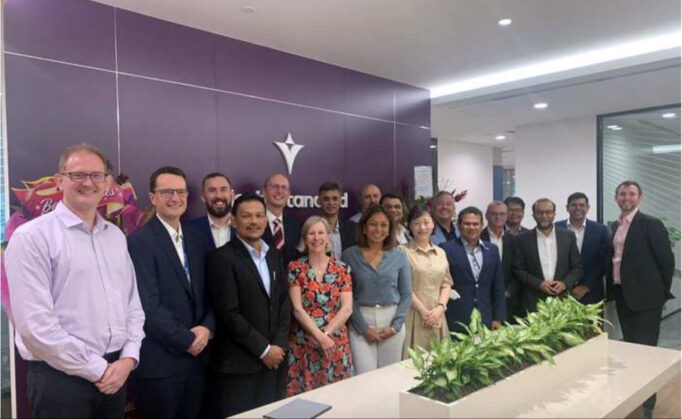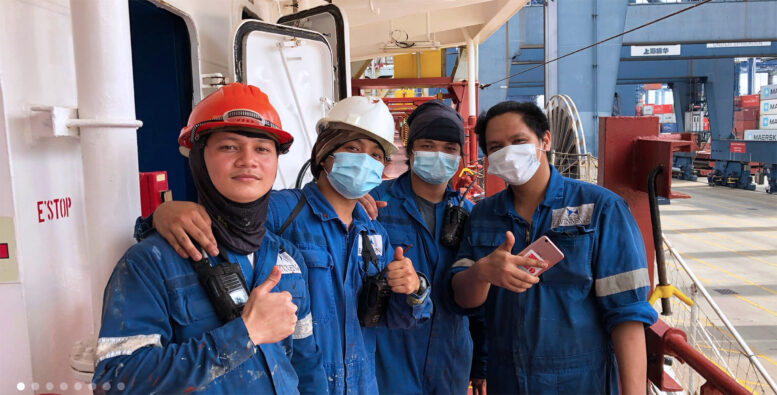As we celebrate International Day of the Seafarer, we are pleased to present a review of the outcomes from the recent June 2023 Mission to Seafarers Executive Roundtable on Crew Welfare held in Singapore. The event focused on identifying solutions to the challenges faced by seafarers.

The Roundtable explored 5 key areas that significantly impact the lives of seafarers: (1) access to shore leave and connection with loved ones; (2) mental health and wellbeing; (3) package, security, diversity, career progression; (4) living & working conditions; and (5) support & management onboard & ashore. We are now assessing how best to potentially attack the issues. There are follow-up meetings planned, perhaps as part of London International Shipping Week (LISW) in September, and a return to Singapore in 2024 to see what we have managed to achieve thus far, and try and build up on the project successes. That gives us a year to try and really drive the changes that seafarers want, need, and may even begin demanding.
Participants exchanged insights and proposed potential solutions in a collaborative space, highlighting the urgent need for proactiveness and solutions.
- ACCESS TO SHORE LEAVE AND CONNECTION WITH LOVED ONES
- Reach out to flag States on key/essential worker status
- Reach out, engage with industry bodies, IMO and UN
- IMO/ILO number for seafarers
- Coding of seafarer issues –abandonment, stowaways, piracy, terrorism, smuggling, shore leave
- Cross reference coding #, seafarer #, ship #, and DOC
- Declare connectivity options in a commercial neutral manner
- Options to better understand and manage pressures on seafarers, and standards that impact them
- Work with port/terminal operators on shore leave and rest days. Encourage discounted rest time in port or anchorage
- Work with small owners. Engage with them on issues, advocate for seafarers, and foster better relations
- Treat crew as adults! Foster higher respect, recognition, and empathy towards seafarers
- Form of SIRE approach to seafarer wellbeing
- Spread the importance of seafarers. Advocate their skills, and the things they do. Make people know and understand, so they can appreciate seafarers
- Get owners, managers, charterers aligned on costs and issues
- Port Metrics on seafarers, use of facilities, shore leave
- Port city approach to local community beyond industry to engage so they know and understand seafarers, and develop means of supporting and welcoming.
- MENTAL HEALTH AND WELLBEING
- Encourage awareness of the tools currently available
- Use data to develop the tools to address real issues
- Ensure industry champions help if anyone is missing
- Innovate in apps to ensure max sharing from seafarers
- Understand barriers to engagement –address survey lag
- Find ways to encourage seafarers to talk – give tokens to spend at airports to help them open up about their trip
- Remove social barriers and stigma around mental health
- Get industry leaders to speak of their own mental issues
- Physical condition monitoring
- Hydroponic fruit and vegetables grown onboard
- Mandatory training on mental health –-how to manage their own to recognize issues and help others
- Manage connectivity –have safeguards and alternatives for a better life without retreating into cabin mentality
- Share industry best practices –have a roster of champions who are proud of their results
- Mental health check –similar to ENG1 status but ongoing basis
- Mentorship program –senior leaders and across, to ensure everyone understands the problems, and the fixes
- Leadership management training –mandatory to consider seafarer welfare
- Ask seafarers for solutions to make life better –prizes and competitions for best ideas
- Use ships as test beds for solutions –learn from “maritime culture labs” launched by shipping companies.
- PACKAGE, SECURITY, DIVERSITY, CAREER PROGRESSION
- Mechanisms to enhance job security
- Move to permanent contracts where possible
- More accountable owners –address issue of pensions
- Compensation issues –fix lag-time between on-time repatriation and salary triggers
- Have rolling contracts to provide more certainty
- Improve working condition, better connectivity
- Manage career progression –include seniority payments even if not promoted
- Provide benefits such as insurance for families
- Invest in upskilling –better access to online training
- Leadership training
- Provide the skills needed for shore jobs
- Provide better links to shore-based professions
- Ship to shore transition career programs
- Improve recruitment focus towards the younger generation
- Ensure psychological & physical safety are given equal priority
- Engage school children –sponsor ship scheme
- Engage with teachers and STEM subjects
- Tax breaks for seafarers –drive policy change
- Change the reality for female seafarers but also understand the barriers for men, fears and stresses
- Digital twin seafaring
- War gaming careers, social interactions, and relationships
- Develop incentives and rejoining benefits to come back
- Audit the industry, find extent of seafarer welfare activities and develop best practices and guidance
- Learn from Navies globally. The Royal Navy and U.S. Navy have done much work in these areas.
- As AI impacts white collar employment in traditional maritime supply nations, offer skilled people with careers at sea.
- LIVING AND WORKING CONDITIONS
- Talk to seafarers, listen and survey. Understand issues on ships. Those already being done by SHI and Idwal –how can we ensure a meta data approach
- Ensure a living wage
- Assist with flow of costs between time at sea and ashore
- Definitions and responses to health to include mental health
- Provide a psychological “safe space” to talk and share with professional guidance and support
- Minimum victualling allowance requires planning
- Minimum standards benchmarking
- Ensure right engagement and buy-in from industry
- Ensure seafarers feel a sense of trust across the vessel –can talk to seniors and be heard
- Ensure onboarding/familiarization includes what they do to socialize and enjoy life
- Improve vessel designs for improved homely environment –make ships a nicer place to live
- Mattresses and bedding are part of MLC –but who is testing?
- Explore shorter contracts
- Explore maternity leave and rotation patterns
- Access to sanitary products and ability to dispose
- Access to correctly fitted and sized PPE
- Provision of changing rooms/bathrooms for women
- Stop the culture of rumor and gossip. Build teams.
- Ensure no one feels isolated, unsupported, or alone
- Online social network onboard
- Change narrative from cost to opportunity –welfare as risk management and excellence. Seafarer Capital! If you don’t have this, you don’t have a business
- Mechanism for seafarers to report positives. What changes are making an impact and improving life?
- SUPPORT AND MANAGEMENT ONBOARD AND ASHORE
- Global promotion of seafarers and their importance
- Humanizing shipping
- Emphasize cultural currency of shipping –its importance and get images of ships and seafarers into art
- Create trust, respect between ship & shore, and beyond
- UN Special Seafarer Rapporteur, a potential neutral focal point
- Balance the move from ship to shore –make seafarers feel valued at all stages
- Seafarers issues should be heard and impacts understood
- Harness and focus on soft skills
- Develop mechanism for a better ship-to-shore dialogue
- Make some consistent conditions with shore
- Apply same ethos on team building ashore with at sea
- Review processes to see how things can be made better
- Emphasize people –minimum safe manning
- Ask whether there is genuine respect and appreciation
- Issue of minimum safe manning level required
- Minimum Safe Manning designation
- Women as not less competent; create a level playing field
- Better preparation for new joiners into the industry
- Explore all cultural differences, and manage impact
- Better onboard environment and recreation
- Ensure seafarers have budget for their needs, to pay on time
- Education and outreach in labor supply areas –ensure awareness of rogue agents and scams
- Business students studying seafarer issues to ensure costs of welfare can be mitigated
- In event of accidents, use trauma-informed care and management.
You can access the full report at Mission to Seafarers
